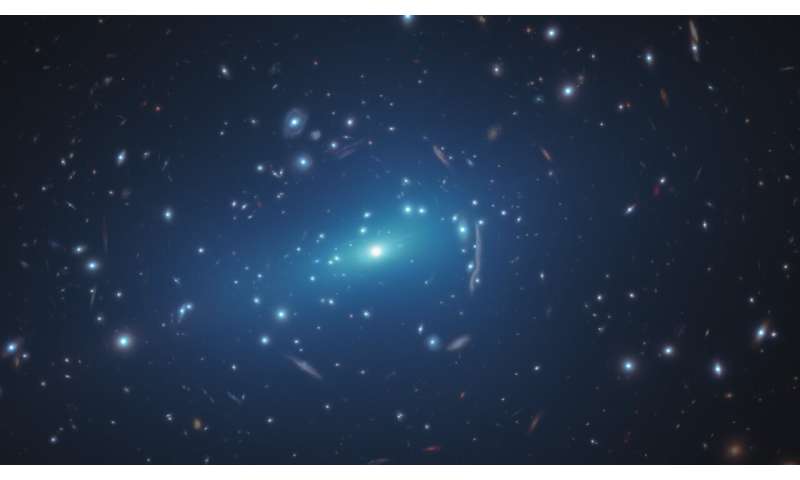Best of Last Week: Ingredient missing from dark matter, a gravity-based energy system and a drug to slow muscle aging

It was a good week for physics as an international team of researchers studying new Hubble data suggested that there is an ingredient missing from current dark matter theories—one that would explain discrepancies between observations of the dark matter concentrations in samples of galaxy clusters and computer simulations. Also, a combined team from Oak Ridge National Laboratory and Brookhaven National Laboratory found that a quirky response to magnetism presented a quantum physics mystery—an expected electronic state in a bulk manganese bismuth telluride sample behaved as if there were no magnetism present. And a team working at a UC Santa Barbara lab used classical concepts to decipher strange quantum behaviors in an ultracold gas—ultracold lithium atoms in an optical trap were found to be doing unexpected things when driven by pulses of energy.
In technology news, British energy startup Gravitricity announced that it had begun construction on an energy storage system that relies on gravity—massive weights will be used in mile-high shafts to store the energy. And a team at Google DeepMind's AlphaZero breathed new life into the old art of chess by developing new variants of the game. Also, a team at the University of California, Berkeley, demonstrated a device that can produce electroluminescence from infrared to ultraviolet wavelengths. And at team at Texas A&M University developed lightweight green supercapacitors that could quickly charge devices.
In other news, an international team of researchers compiled the first-ever continuous, high-fidelity record of variations in Earth's climate extending 66 million years into the past—giving scientists another tool to better understand how the Earth might respond to global warming. And a team affiliated with multiple institutions in the U.S. found that middle-aged individuals may be in a perpetual state of H3N2 flu virus susceptibility—a finding that could have serious implications as the COVID-19 pandemic continues to threaten people around the globe.
And finally, if you are among the billions of people around the world experiencing muscle loss due to aging, you might want to check out the results of a team of researchers from Switzerland and the U.S.—they found that the drug Rapamycin may suppress muscle aging and prevent sarcopenia.
© 2020 Science X Network